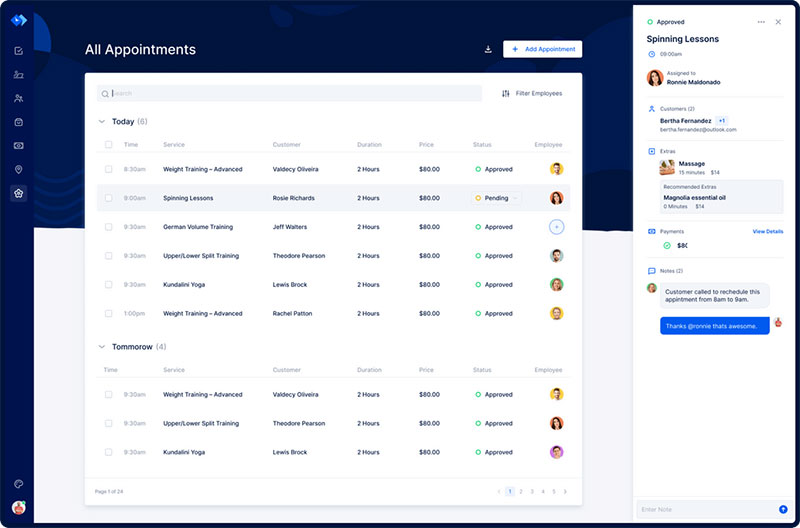The audience’s engagement level determines your online course’s success. If levels of engagement are very low you will have to invest time and effort to improve your course. It is more productive to use your time and resources to produce an engaging course than to rearrange a course after it has been launched.
The involvement of students is so crucial in the online learning environment. No involvement means that students will not benefit from a course.
Interactivity is one tool that you can use to make your online courses more engaging. How to make online classes more interactive is the premise of this article. Consider 14 easy things you can do to make the learning process more effective.
Benefits of Interactive Online Classes
Most people don’t handle monotonous presentations very well. Most will let their minds wander or will even fall asleep! Determination to pay attention won’t save them.
On the other hand, most students feel much more inspired when they enter an interactive learning environment. An interactive learning experience puts the students at the center of the process.
Why are interactive approaches so effective in online education? Ruminate on the following reasons:
- Enhanced learning outcomes. Engaged students learn faster because they feel more involved. That involvement boosts their thinking levels to otherwise unexplored levels. Hence, they will learn new skills better and be more interested.
- Greater student involvement. Interactive learning stimulates higher-order thinking. Passive learning will not lead to this deep level of brain usage.
- Improved emotional connections. Interactive learning also engages students’ emotional faculties. It allows them to interact more with fellow students and teachers.
- Maintaining focus. In traditional passive learning environments, the mind starts to drift very quickly. Interactive games, polls, and discussions help students to maintain focus.
Tips on How to Make Online Classes More Interactive
Let People Choose What They Want to Discuss
Empowering students to choose a topic that appeals to them stimulates engagement. They will pick something that interests them and is relevant to their personal situation. Later, you can introduce recommendations or mandatory sections if needed. Yet, giving them the freedom to choose will engage them with your online course.
Combine Different Media Types

Nowadays students interact with graphs, 3D models, infographics, photos, and videos. Even though that is what they like, it doesn’t mean that they understand them. A nice tip is to add interactive elements to your visual aids. You can add links, notes, or recorded voice explanations. These can guide the students’ attention and highlight important points.
Check Students’ Progress More Often
Tests are very common in traditional classroom settings. It allows teachers to keep track of a student’s progress. You should do the same in online teaching environments. You can do this in two ways. First, you can give them a traditional test. Second, you can ask the class some challenging questions related to their studies, like a verbal exam.
You can engage online students even further by presenting them with online polls and quizzes. You can even reward the winner with a prize. But remember, the tests’ purpose is to evaluate the level of each student and who needs a bit more attention.
Invite Students to Contribute
Another active learning element is hosting online group study sessions. By giving them task-based assignments they will understand the practical value of what they learn. Most students find this tactic engaging and motivating to stay inspired throughout the course.
Give Homework Assignments
Homework sounds boring and annoying, but it does not have to be. You can provide exciting interactive online exercises. To engage students further you can encourage them to share their results with fellow students.
Assign exercises that create opportunities to have one-on-one conversations and track individual students. Conversations do not have to be face-to-face but can be through chats or comment sections.
Ask Questions During Online Classes
Online quizzes can be fun and engaging, but they can also be tedious and counterproductive. Be careful how you use them. The goal is to increase and reinforce knowledge and stimulate active learning.
There are several paid and free online quiz platforms. They are useful tools to assess students and check their memory. Many online course creation software solutions have a feature to add quizzes to your course materials.
There are different ways of asking questions, so there are different ways to answer them, such as
- Multiple-choice
- Matching answers
- Fill-in-the-blank
Regular testing of progress increases knowledge retention. You should at least have a test at the halfway point and the end. Tests check for knowledge gaps and give variation to your course content, thus increasing engagement.
Your mentorship success story starts with a scheduling app to streamline your calendar
Staying organized has never been easier.
You can now manage your business and grow your brand with a single, powerful software that keeps all of your appointments in line, your clients organized and your business booming.
Trafft is perfect for business owners who need to streamline their booking experience both for their staff and their clients.
Trafft handles everything for you, even sending automated email or SMS reminders to your clients. No-shows? Not anymore!
The Trafft booking software adapts to different industries for a blissful online booking experience and employee management.
Want to know more? Check out Trafft’s awesome features to see what you are missing.
Try Running a Cohort-Based Course
Maybe you have never heard of cohort-based learning. It means that a group goes through a syllabus together and graduates together at the end. Yet, it puts extra emphasis on teamwork and collaboration and less on the individual process. Students work together, check in on each other, and share ideas.
The benefits are that classes feel more direct and personal. The format encourages students to develop critical thinking skills about the material.
You need a virtual classroom, like Google, Hangouts, Zoom, or Microsoft Teams. Meeting often with your class is essential to make the cohort-based course format work.
Micro-Learning
Some have found a micro-learning approach very beneficial for their online courses. You divide your course into short sessions and attach a mini prize to each chunk. An example of this learning process is LinkedIn Learning. They add rewards and milestones to each stage.
You begin by taking your course materials and dividing them up into small chunks. Then, you can group these chunks by milestones. You can also add a test or timed quiz to each milestone. This active learning method rewards success and keeps students engaged.
Use Storytelling
Humans have always enjoyed telling and listening to stories. It can also make your online course more interesting. Besides, it makes your work as a teacher easier. Why not use this technique in your online teaching? It has many significant benefits:
- Aids in Retention. An interesting story breaks the classroom routine. Students can immerse themselves in the story, and it helps them to remember important points better.
- Improves listening. Online classes can be boring and many students struggle to stay focused. A story can help to refocus on the course. Listening is an important skill that they learn to develop at the same time.
- Instills values. Stories are often about humans and animals. Besides the point that relates to the class, students learn important life lessons.
Including stories will make your content delivery better. You can even consider including audio, video, or other animations. That will enhance the immersive experience even further and make the content more powerful.
Use Gamification
How to make online classes more interactive and engaging—here is another suggestion. Motivate your class by letting them play games and rewarding them. The term gamification has gained a lot of popularity in recent years. By including games you engage, but you can also set and achieve goals. Students learning desires receive immediate gratification. They get points, badges, or high scores.
Rewarding serves to keep students engaged and motivated to do better. It keeps them on their toes and encourages some amicable competition. There are different ways to include games in your online course and make a bigger impact on your students’ learning experience.
Allow Your Students to Chat and Comment on Your Lessons
The most important interaction students can have is with their teacher. Keeping those lines of communication open, even during class, helps to increase student engagement. Let them ask questions, have discussions about the material, and give feedback.
Free communication during class also helps to build connections between students. Better connections lead to extra learning opportunities.
Even in a digital setting, there are various tools that allow for interaction. It may seem limited, but a chat feature can do a lot of good to get individuals out of isolation. Seeing that other students struggle with similar problems is an encouragement to continue.
Scenario-Based Learning
The latest trend in adult online classroom settings is scenario-based learning. Scenario-based learning means that much of the learning is imparted through analyzing specific applications in context.
This could be in real-life scenarios. You can have one student play the role of a doctor, for example, and another one the one of a patient. As a teacher, you must guide them through the scene and provide useful feedback.
This method is very effective because it imitates real-life scenarios. When you can get them to participate, you have succeeded in making your online lessons interactive and more engaging. It requires you to come up with realistic scenes and practical content.
Use Different Forms of Communication
Online chats are instrumental communication channels. But there are many more tools to stay in touch with your students:
- Chatbots. You can use bots for repetitive conversations. They’re useful for providing standard information about the course and enrollment.
- Email. You can send specific information using email. Share additional course material, surveys, and success stories.
- Text Messages. This channel is great for last-minute announcements. It keeps students informed of their deadlines.
- Social Media. It makes you stand out as a teacher. It works well for sharing small bits of information and attracting new students.
Create and Nurture Your Course Community
An online classroom is a place where course participants get support and encouragement. Both teachers and fellow classmates are part of the process of building motivation.
Communication between students and teachers builds engagement, dedication, and morale. Teachers too benefit from this. Use these communities to hold discussions, engage new students, and share updates.
FAQs about making online classes more interactive
1. What are some effective methods for increasing student engagement in online classes?
Instructors might include interactive exercises like tests, polls, and group discussions to boost participation in online classes. Using gamification, where students receive points or badges for completing assignments or taking part in conversations, is another successful strategy. Also, instructors can provide students with specific comments and motivate them to actively participate in their own education.
2. How can online classes be designed to promote peer-to-peer interaction among students?
Instructors might make use of breakout sessions, discussion boards, and group projects to encourage peer engagement. Collaboration among students can also be encouraged by group projects that call for cooperation. Teachers might also exhort pupils to offer criticism and assistance to their fellow students.
3. What are some best practices for incorporating multimedia content in online classes to enhance interactivity?
In order to keep students interested, teachers should incorporate multimedia content using a number of formats, including films, photos, and audio recordings.
Also, they should make sure that the information is pertinent to the course curriculum and offers precise illustrations or justifications. In order to improve their learning, instructors might also encourage students to produce original multimedia content.
4. What kinds of online activities or assignments can be used to encourage students to apply what they’ve learned in class?
In order to motivate students to put what they have learned in class into practice, instructors can employ case studies, simulations, and problem-solving exercises.
The chance for pupils to showcase their knowledge and abilities can also be found in group projects or presentations.
In order to assist students to relate what they have learned to actual applications, instructors can also offer examples or scenarios from real-world contexts.
5. How can online classes be designed to encourage critical thinking and discussion among students?
Instructors might employ case studies, debates, and open-ended questions that compel students to analyze and evaluate information to promote critical thinking and conversation.
They can also motivate pupils to question presumptions and take into account various viewpoints. To facilitate these discussions and guarantee that all students have a chance to engage, instructors can offer direction and criticism.
6. What tools or platforms can be used to facilitate interactive learning experiences in an online class?
Interactive learning can be facilitated by the use of tools like video conferencing software, learning management systems, and interactive whiteboards.
Collaboration tools, virtual breakout rooms, and polling software can all encourage involvement. Tools that are simple to use and available to all students should be selected by instructors.
7. What are some strategies for fostering a sense of community and collaboration in online classes?
The utilization of icebreakers, team-building exercises, and group projects by instructors can help students feel more connected to one another and more collaborative.
They may also give students chances to communicate with one another outside of the classroom, through discussion boards or online communities. Teachers can promote collaboration among their pupils by acting as an example of how to work together.
8. How can instructors ensure that all students have equal opportunities to participate in interactive activities in an online class?
By outlining their expectations for involvement and offering a variety of chances for participation, instructors can guarantee that all students have an equal chance to participate.
They can lead discussions in a way that invites participation from all students by using inclusive language. Moreover, instructors may offer modifications to assignments or additional time to accommodate students with special requirements or preferences.
9. What are some common challenges faced when making online classes more interactive, and how can they be addressed?
Technical issues, student motivation, and time restraints are typical difficulties. By offering detailed instructions, and technical assistance, and by fostering a positive and stimulating learning environment, instructors can overcome these issues.
They can also guarantee that activities are pertinent and meaningful, and they can offer incentives for participation.
10. How can online classes be adapted to meet the needs of students with different learning styles and preferences?
The use of visual aids, aural explanations, and kinesthetic activities are just a few of the teaching strategies that instructors might employ to fulfill the needs of students with various learning preferences and styles.
In order to accommodate students’ differing learning preferences, instructors can also provide course materials in a variety of media, including text, audio, and video.
Diverse learning preferences and styles can be accommodated by giving students options for flexibility and choice.
In order to understand the needs of their students and modify their teaching style, instructors might also communicate with them.
Concluding How to Make Online Classes More Interactive
Online classes are overwhelming sometimes, both for the teacher and for the students. But they are becoming more important in the world of education. There are ways that you can make them interactive and more engaging.
Active participation helps to enhance student engagement. You can do this by including interactive online learning elements. The 14 tips mentioned in this guide on how to make online classes more interactive will help you.
If you enjoyed reading this article about how to make online classes more interactive, you should read these as well:
- How to be an online personal trainer and be good at it
- How to Start an Online Personal Training Business (In-Depth Guide)
- Successful coaching business model examples you can try




